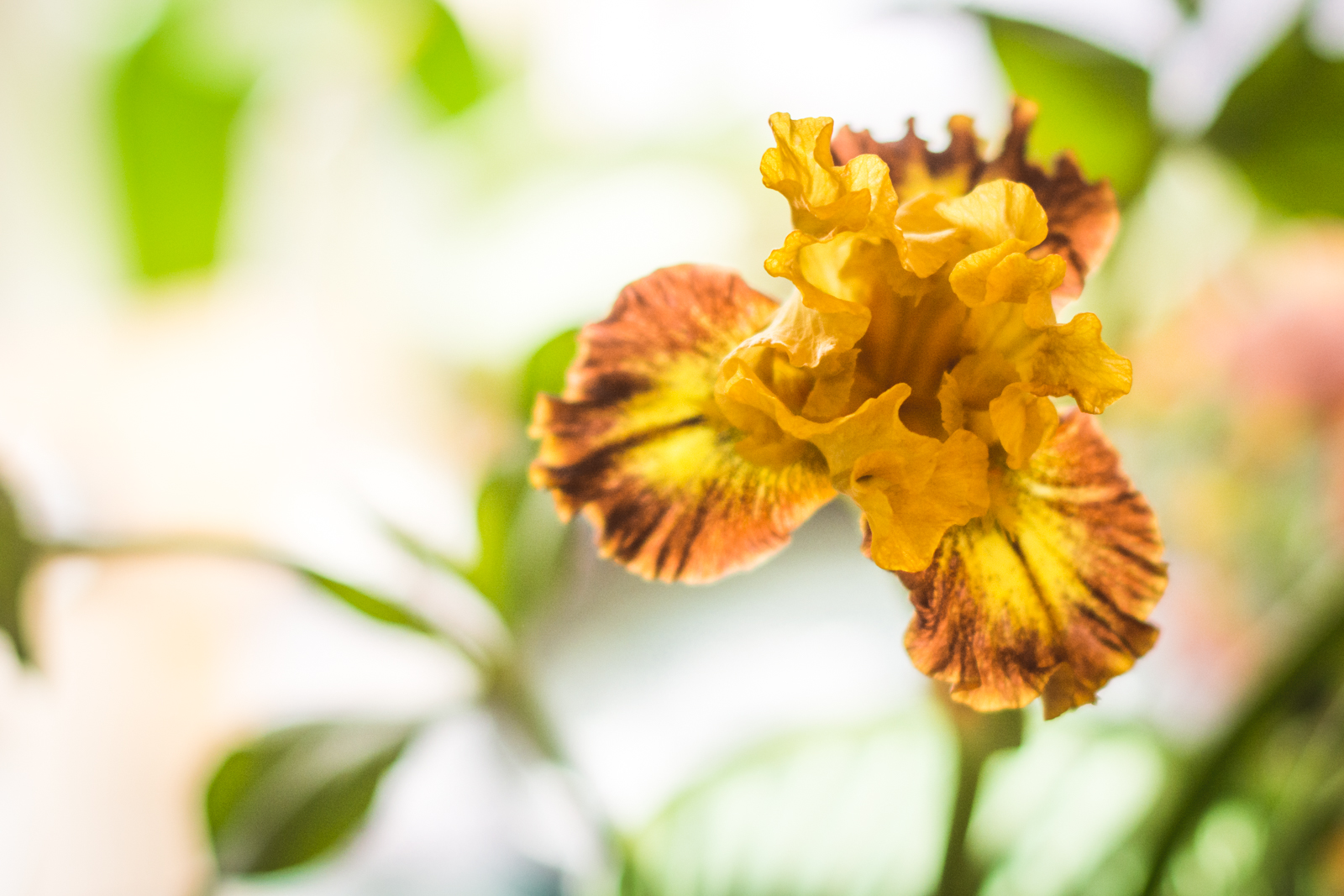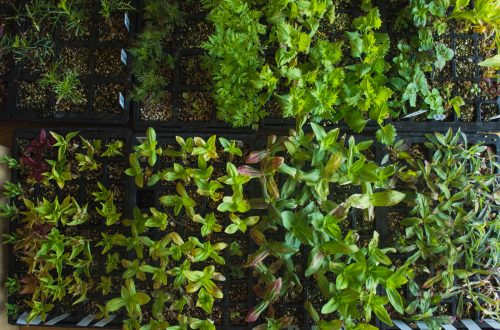
You know the saying, “You don’t know what you don’t know”?
Yeah, I’ve definitely been feeling the truth of THAT this whole first year of flower farming.
I consider myself to be a fairly intelligent individual, so when I approached this whole idea of actually going for my flower farm dream, I did a LOT of research. And I mean a LOT. Even now, several months in, I’m still studying seed catalogs for fun and browsing through a flower farming or flower arranging book nearly every day.
But in all my research and all my spreadsheet-making and all my careful calendar planning, I never stopped to consider that “days to maturity” is SEVERELY impacted by weather. And indoor growing conditions. And the presence (or not) of certain nutrients in the soil. Oh, and I also neglected to note that stem length would also be affected by these same variables.
So when I sat down and made up my list, I tried to account for everything—I was planting things right on schedule, I was leaving things inside for as long as you were supposed to, and I was confident that all of my hard work and dedication and planning and downright worrying about it would mean that I was fairly flush with blooms by late June.
See, here’s what you don’t notice if you’re not a hardcore cut flower enthusiast or flower farmer—
There isn’t much in bloom in June.
Correction: There isn’t much in bloom in June that you can actually use in a cut flower arrangement, not unless you’ve nailed your planning, overwintered plants, and had pretty ideal late spring weather conditions.
In fact, in the flower world, there’s even a term for it — the June gap.
I didn’t have a chance to overwinter plants (because of when we moved here), but I thought I HAD nailed my planning. Maybe that was true on some things, but thanks to a super crazy heat wave early in June that freaked out all my hardy annuals that prefer the cooler weather, all the blooms and stems I SHOULD be harvesting right now are all…extremely short.

Seriously, if I could have looked back at these first several months of farming in advance, I would have told my March self, “Yeah, you’d be crazy to take on CSA subscriptions this first year, at least not until midsummer.”
But take them on I did, and thanks to many little miracles that came as literal answers to prayers, I’ve somehow managed to have enough for each one of my CSA bouquets on schedule.
Until this week.
I was supposed to send out 7 bouquets this week. As it stands, I’m only going to be able to send out 3, and they will be the smallest bouquets that those CSA members will get this season. And the only reason I’ll even have enough for those is thanks to: 1) The experimental sunflowers I’ve been planting out weekly or so since April (but which I should have planted a LOT more of), 2) the hardy annuals I direct sowed on March 1st, which have provided some of my much needed filler accents (and which have *barely* hung on long enough to allow me to do these, though they will for sure be done after this week), 3) the perennials and bushes that were already established on the property before we moved here (seriously, I was SAVED by the fact that there was an established patch of gorgeous Oriental poppies and a few peonies that popped up earlier this month), and 4) the fact that I basically live in the countryside and have been able to forage for the remaining filler and accents I lacked.

It was not a fun task to contact the rest of the CSA members who would have to wait longer to receive their expected bouquets. Granted, every last one of them was gracious and wonderful and so, so understanding, but still—
I feel like I should have put in more safeguards, somehow.
My biggest problem right now is that almost everything that I SHOULD be harvesting right now is blooming too short. I should have had plenty of filler for these bouquets—the airy baby’s breath pictured above, nigella (pictured below), the handful of larkspur that actually germinated out of a couple hundred seeds sown, and the prettiest annual phlox in all shades of purple plus an antique cream/rose combination. And all of that is indeed blooming…on too short of stems. I am pinching off the too-short blooms like crazy to try and stimulate the plants to get taller and keep producing, but my hopes aren’t high at this point–that heat wave we had a couple weeks ago seemed to shock all my cool-loving plants into frantic production, and I don’t know that there will be a chance for them to bounce back now that we’re into the heat of summer.

However, making mistakes is part of the process (and I’ve made a LOT of mistakes this first year). My job now is to use those mistakes to inform my plan for future years, which is what I’m trying to do now. I’ve been studying the Instagram feeds and YouTube videos of flower farmers with similar growing seasons/zones as me and seeing what they have blooming in June, and then I’ve been taking steps as I can.
The biggest thing I can do?
Establish June-blooming perennials, such as peonies, roses, and daisies. The peonies I was already on top of, as I planted something like 9 or 10 peony tubers/plants this year. However, as those will take around 2-3 more years before they start really producing, I have to still look elsewhere for solutions. I did plant 5 bare-root roses early in the spring (and have plans to purchase more in the fall), but once again, the problem is that I’ll have to wait a couple years before I can really start expecting the blooms and stem length I need from those.
I have planted two ruffly varieties of Shasta daisies–which should help a bit next year–but it won’t be enough. So I’m trying to go all out and figure that overplanting will be better than underplanting, so I’ve put in some Canterbury bells and foxgloves (both biennials that won’t produce until next year), I have plans to overwinter as many hardy annuals as can tolerate a Zone 6 winter, and I’ve put in an order for 500 ranunculus corms (gulp). Honestly, I worry that I’ll kill every last ranunculus plant because they’re notoriously fussy to grow (especially in a climate like ours where our spring is over in a flash), but I’ve got to try.

All this is to say that the flower farm doesn’t look like much right now–just a whole lot of green, mostly–but that I’m at least learning from my mistakes and trying to correct them as early as possible.
At the very least, it’s been extremely easy to stay on top of harvesting, as you’re actually really not SUPPOSED to see a lot of blooms on a flower farm (as that usually means you’re past the ideal harvest time). And I will say, I have enjoyed the one perk of having everything blooming too short—getting to enjoy a lot of short bouquets in my own home!
I’m crossing my fingers that July brings an end to the worrying about whether or not I’ll have enough to fulfill the CSA subscriptions every week, but only time will tell. Here’s hoping!

What blooms in June in YOUR neck of the woods?
P. S. If you want to see what IS blooming tall enough (and what my bouquets have been looking like lately), make sure to follow the flower farm over on Instagram!







Oh, they joys and woes of agriculture 🙂 Peonies and roses are definitely good in June. Here in my garden the salvia and lupines looked awesome all month. The lupines looked awesome, that is, until the aphids decimated them. I don’t remember having aphid problems on them last year, so I don’t know why this year. Jupiter’s beard was blooming for me last June I think, but I don’t know how well it does as a cut flower. Hang in there!
I did plant some salvia this year, though it’s been looking very sad ever since the heat wave we had early last month. I also planted some Russian sage, which should be good this time of year too if I can get it to overwinter okay. And I actually love lupines, but I’ve never had any success with them! They always die out on me. Any tips?
I’m sorry I don’t have any better advice for lupine than “benign neglect”. I don’t actually particularly like the hybrid lupines, I’d prefer the native ones I find hiking, but since they were already in the garden when we moved in I’ve just let them be.
I wish I had some tips for lupine besides “benign neglect”. Ha. I don’t actually particularly care for the hybrid lupines – I’d much prefer the native species. But this was here when we moved in, and I’ve just let it self seed. This year I cut it way back after it was done blooming due to the aphid situation, but some of it might actually give me a second flush later this summer like it did last year. Good luck!
Maybe I’ll give it another shot here. Different soil, different results maybe?
Torrie! Wow – what a way to learn! You’ve done an amazing job and now you know how to avoid the June gap next year… the hard part is that weather is always a wild card!
Blooming in my yard in NH right now: foxgloves, strawflowers, petunias, larkspur, snapdragon, roses, chamomile, and zinnias. This is my first year with strawflowers and they are gorgeous! We have a tiny bit of lavender, but nothing amazing.
I’ve loved following along with your blog. Thank you for taking the time to write all of ths up!
I planted strawflower this year, but it hasn’t bloomed yet. Did you buy yours as established plants or start them from seed? I think I’ll definitely be starting a lot of my seeds earlier next year. Either that or I’ll try soil blocking since the seedlings seem to grow faster that way. Always so much to learn!